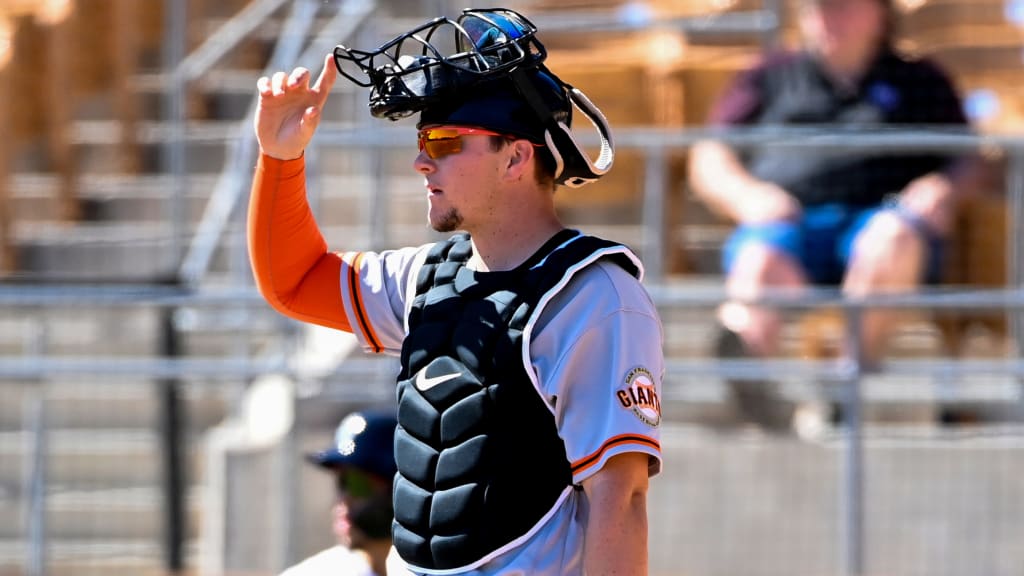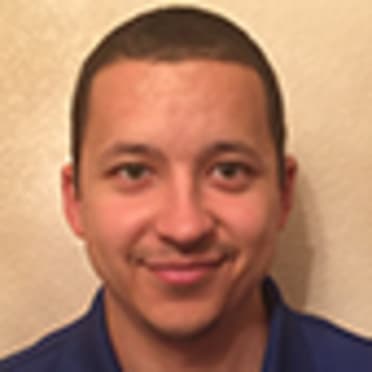
SCOTTSDALE, Ariz. -- Patrick Bailey's professional career is still in its infancy, but there’s plenty of intrigue surrounding the Giants’ No. 8 prospect and the future behind the plate in San Francisco.
After starting his career in atypical fashion in 2020 -- immediately competing with Major League-caliber players at the Giants Summer Camp and alternate training site -- Bailey began his first full season with High-A Eugene. He scuffled a bit, battled through some lower back tightness, then went to Arizona to make some adjustments before finishing the season on a hot streak with Low-A San Jose.
“I think people thought he should just come in and kill it from day one,” said Kyle Haines, San Francisco's director of player development. “But there’s a reason there’s every level of the Minor Leagues, and he did a great job of growing after that slow start.”
After batting .185 over the first two months of the season, Bailey hit .350 in August and September and is slashing .308/.386/.462 through 11 games in the Arizona Fall League.
Some of that success is undoubtedly related to health and getting back into a rhythm after the cancelled 2020 season. But it'd be a mistake to ignore the work Bailey put in behind the scenes. The 22-year-old switch-hitter adjusted his swing plane, refined his approach and developed a more consistent swing overall.
“The stuff we worked on in July and August with the swing and trusting the work I put in in the cages to correlate in the games without having to think about it,” Bailey said of what clicked for him late in the year. “I was able to go up there with just an approach and a plan and stick to that.”
The results were obvious. Bailey’s walk rate increased, his strikeout rate decreased and his second-half OPS (.946) was nearly double the .587 he posted over his first 33 games.
He has yet to reach Double-A, but he entered pro ball as an advanced prospect. With Buster Posey’s retirement, it’s natural to look ahead at the future of the catching position for the Giants.
Yes, Joey Bart, MLB's No. 16 prospect, is the heir apparent, but where does that leave Bailey?
The question came up almost immediately when the Giants drafted Bailey 13th overall in 2020, just two years after selecting Bart second overall, and it's been pressed to the forefront once again after Posey announced his retirement last Thursday.
“Catching is so rare that when you have an opportunity to add a catcher who can impact the game on both sides, it’s really hard to turn it down, and I think there’s a place on our Major League team for both players,” Haines said.
It’s rare for players nowadays to catch 140 or more games in a season anyway, so having two capable backstops is always a plus. The slugger Bart and the switch-hitting Bailey each offers offensive value as well, and a universal DH could provide a way to get both into the lineup.
“It’s an area we were probably thin at when we first drafted Joey, and now we feel like it’s a huge strength to have multiple top catching prospects that can develop into great players and also push each other to help each other’s growth,” Haines said.
Of course, Bart has already spent some time in the Majors and is further along in his development. Bailey has the potential to be a quick riser and accelerate through the system, though he acknowledges it's important not to rush the process or worry too much about the future.
“It definitely doesn’t do me any good looking ahead,” the North Carolina State product said. “I just need to handle my business and trust the work I put in.”
Putting in work has been a constant for Bailey, who started switch-hitting when, at age “10 or 11,” he was told it was one of the quickest ways to get to the Majors.
The work continued in college as he developed into a first-round Draft pick and has followed him into pro ball, where the demands on a catcher are heavy.
Developing into an elite defender takes time as catchers have to learn how to call games and manage a pitching staff. Bailey did call pitches in college, so he wasn’t starting from scratch as he entered pro ball, and that experience has been helpful.
“Sometimes it’s not even what pitches are called, it’s just from a game-flow perspective -- being able to help move the game a little better, being able to look at the pitcher and see what they need from you,” Haines said.
“You don’t have that break of looking into the dugout for pitches. … Having that experience of calling his own game, same with Joey Bart when he came from Georgia Tech, they’re able to pick up on the rhythm of the game and make mound visits and be in touch with what the pitcher is needing to do, wanting to do and whether they’re doing it.”
Bailey is still working on the transition to pro ball, noting that playing every day and dealing with adversity was a big adjustment.
“You kind of have to learn how to almost numb yourself to results,” Bailey said. “Baseball is a game of failure. You really have to be able to find the good stuff in the bad and see all the little battles you win and stay positive about that.”
San Jose hitting coach Danny Santin mentioned that Bailey is his own biggest critic, though everyone sees how good he can be.
The ceiling is exciting, the tools are enticing, but patience is important, as his ETA is likely still a year or so away.
“A lot of times we want to rush things, but it’s a process,” Santin said. “I think he’s an everyday big league catcher and an elite defender.”
So if Bailey is as good as advertised and Bart also lives up to expectations, who replaces Posey as the long-term catcher in San Francisco?
“We’ll cross that bridge when it gets there,” Haines said. “It’s a good problem to have if we do end up with that.”
